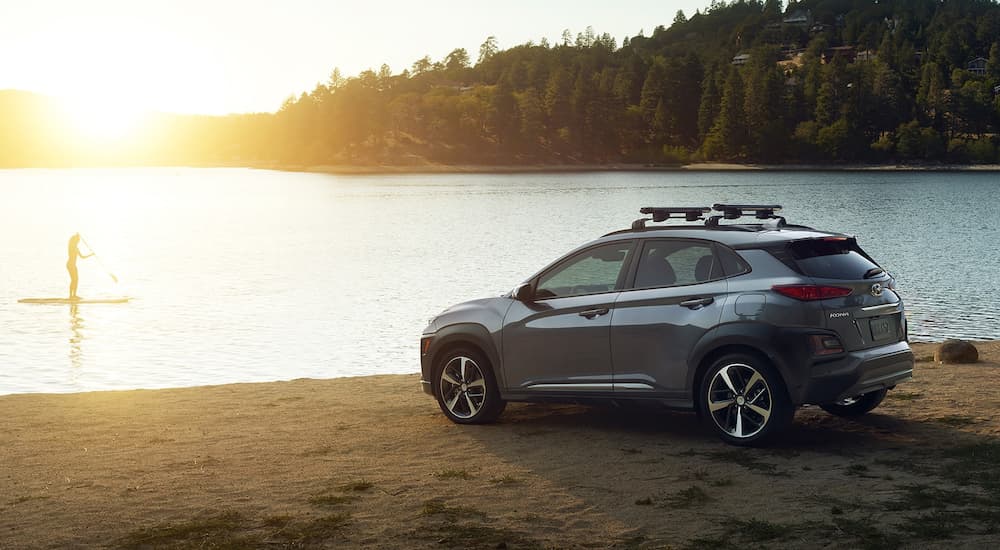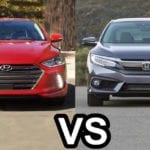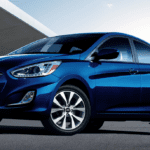Today on AutoInfluence, we hand our spotlight over to Hyundai in a surprising declaration of our love for (cue: record scratch) the Kona. And yes, we’re as surprised as you are.
Awards are always slippery slope, with both OEM and dealer advertisements sometimes relying upon them in order to differentiate their offerings from those of competitors, and also for consumers largely indifferent and often possessing only a vague understanding of what such awards mean. The Kona, for example, was named ‘North American Utility Vehicle of the Year for 2019’, an IIHS ‘Top Safety Pick’ and earned Kelly Blue Book accolades for both ‘Best Subcompact SUV Buy of the Year’ and named one of their ’10 Coolest New Cars Under $20,000’. Awkward silence…
Okay, so..?
Bottom-line, industry and consumer recognition is commendable, but in a pay-to-play world we put a whole lot more faith in personal impact than in some random J.D. Power award (sorry Chevy) and in that regard, the Kona ranks among a number of vehicles (especially in the last five years) that has caught us off guard. Why? Because its appeal has nothing to do with awards or hype.
It’s not that we think the Kona is without its flaws or failings, or that we think it’s some sort of impeccably designed game-changer. It’s just that – like the Veloster before it – we appreciate the subcompact Kona for what it is. First, it’s an organic continuation of Hyundai’s recent success at reinventing themselves for next-gen consumers. Second, the Kona offers a distinct and appreciable identity all-its-own, in a segment that’s rarely known for uniquity. In other words, the Kona feels like Hyundai had a clear understanding of what they wanted to achieve, and were successful in their attempt.
Accessibly-priced, the 2019 Kona enters the market at around $19,240 MSRP, served up in four trim levels that stay pretty well-contained in terms of price-point. So, with a modest footprint and a noteworthy 33 highway miles per gallon, its bound to tick a few boxes for Millennial and Gen-Z consumers right off the bat. But the Kona avoids many crossover pitfalls, offering a modern, angular aesthetic that feels refreshing amidst the bland doorstop design of most crossovers. Plus, distinctive color options like Lime Twist and Sunset Orange only help to accentuate its youthful, playful aesthetic. A note which extends to the interior, with the option of matching colored trims and accents on seat upholstery, shift controls, vents and steering wheels. It’s a small touch, but it’s an impactful one.
But setting aside matters of superficiality, let’s address the elephant in the room (and by that we mean performance). Those who might not be enticed by the 147hp rating of the base Kona’s 2.0-liter powertrain might appreciate the upgrade introduced by the Limited trim, delivering 175hp and 195 lb-ft of torque through a 1.6-liter Turbocharged four-cylinder engine paired with a 7-speed dual clutch transmission. And that transmission offers short, smooth shifts, with the option of manual shifting, as well as the adaptability of alternative drive modes.
Granted, no output records are being set here, but either powertrain option helps the Kona to feel like a timely offering, accommodating the continued evolution of consumer sensibilities. And since not everyone is as power-obsessed as some of us may be, the fact that even the most potent Kona powertrain still delivers 30 mpg’s alongside well-mannered handling…well, it’s hard to argue the appeal.
And speaking of evolving consumer wishlists, the Kona delivers a number of amenities both comfort and tech-centric that are deserving of recognition. Nuances such as heated seats and wireless phone charging are becoming progressively more commonplace, but they’re still worth taking note of when available as options. And the ever-expanding array of safety features (be they part of Hyundai SmartSense or otherwise) are always welcome, as is the increasing standardization of heads up displays which help to battle driver distraction.
Having mentioned Hyundai SmartSense, the comprehensive bundle of safety and driver assistive features are well-realized. Forward Collision Avoidance and Rear Cross-Traffic warnings are a plus, as are Blind Spot Collision warnings and Lane Keep Assist. But as these become more omnipresent across most makes, models and trim levels, it’s easy to lose appreciation for their innovative nature. Thus, the inclusion of Driver Attention Warning as an available safety feature brings us back to a place of gratitude, knowing that our driving patterns (not entirely unlike our Netflix viewing habits) are being monitored to ensure that we’re still paying close attention. Okay, fine, both might come across as a little bit unsettling sometimes, but we’re growing increasingly more glad for such technology with the understanding that it’s designed to established a greater bond between car and driver.
So, while the Hyundai Kona might not tick all of our boxes in the performance column, that fact that it manages to turn our head (even just a little) leads us to believe that they’ve really delivered a compelling offering for their target demographic. Stylistically, we get what they going for, and we kind of love it. Hyundai really seems to have come into their own, as of late, knowing exactly who they – and their audience – are, and seem to be making no attempts to be anything else. And that is the kind of mentality that we can get behind.
What are your thoughts on the Hyundai Kona?
In the meantime, this has been AutoInfluence, thanks for listening.





